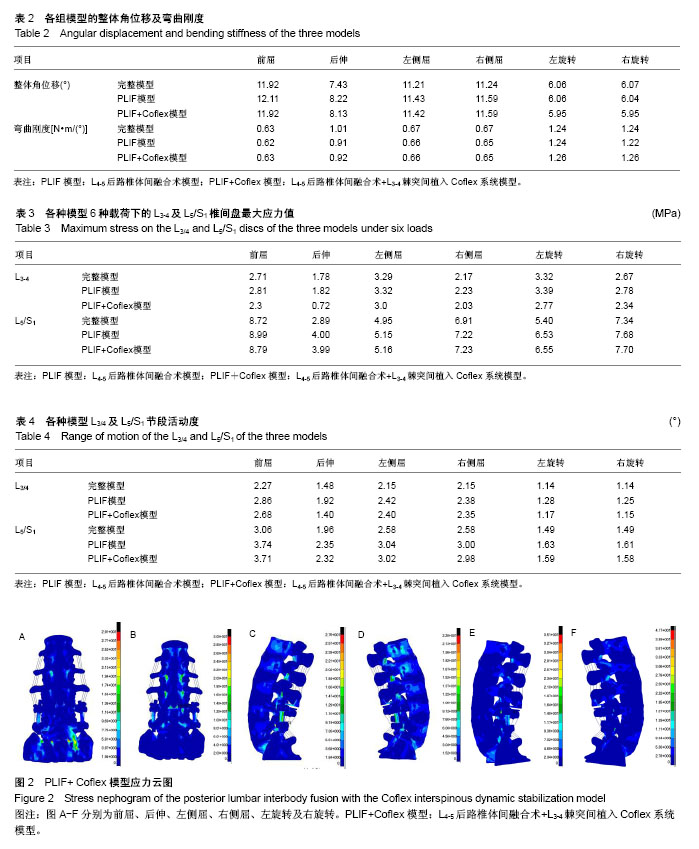| [1] Mobbs RJ, Phan K, Malham G et al.Lumbar interbody fusion: techniques, indications and comparison of interbody fusion options including PLIF, TLIF, MI-TLIF, OLIF/ATP, LLIF and ALIF. J Spine Surg. 2015;1(1):2-18. [2] Fleege C, Rickert M, Rauschmann M.The PLIF and TLIF techniques. Indication, technique, advantages, and disadvantages. Orthopade. 2015;44(2):114-123.[3] Pan A, Hai Y, Yang J, et al. Adjacent segment degeneration after lumbar spinal fusion compared with motion-preservation procedures: a meta-analysis. Eur Spine J. 2016;25(5): 1522-1532.[4] Virk SS, Niedermeier S, Yu E, et al. Adjacent segment disease. Orthopedics. 2014;37(8):547-555. [5] Pintauro M, Duffy A, Vahedi P, et al. Interspinous implants: are the new implants better than the last generation? A review. Curr Rev Musculoskelet Med. 2017;10(2):189-198.[6] Ravindra VM, Ghogawala Z. Is there still a role for interspinous spacers in the management of neurogenic claudication? Neurosurg Clin N Am. 2017;28(3):321-330. [7] Zhu Z, Liu C, Wang K, et al. Topping-off technique prevents aggravation of degeneration of adjacent segment fusion revealed by retrospective and finite element biomechanical analysis. J Orthop Surg Res. 2015;10:10. [8] Nguyen NL, Kong CY, Hart RA. Proximal junctional kyphosis and failure-diagnosis, prevention, and treatment. Curr Rev Musculoskelet Med. 2016;9(3):299-308. [9] Reichl M, Kueny RA, Danyali R, et al. Biomechanical effects of a dynamic topping off instrumentation in a long rigid pedicle screw construct. Clin Spine Surg. 2017;30(4):E440-E447.[10] Lo CC, Tsai KJ, Zhong ZC, et al. Biomechanical differences of Coflex-F and pedicle screw fixation combined with TLIF or ALIF-a finite element study. Comput Methods Biomech Biomed Engin. 2011;14(11):947-956. [11] Heth JA, Hitchon PW, Goel VK, et al. A biomechanical comparison between anterior and transverse interbody fusion cages. Spine. 2001;26(12):261-267.[12] Ghasemi AA. Adjacent segment degeneration after posterior lumbar fusion: An analysis of possible risk factors. Clin Neurol Neurosurg. 2016;143:15-18. [13] Liu X, Liu Y, Lian X, et al. Magnetic resonance imaging on disc degeneration changes after implantation of an interspinous spacer and fusion of the adjacent segment. Int J Clin Exp Med. 2015;8(4):6097-6102. [14] Okuda S, Oda T, Yamasaki R, et al. Repeated adjacent-segment degeneration after posterior lumbar interbody fusion. J Neurosurg Spine. 2014;20(5):538-541. [15] Abode-Iyamah K, Kim SB, Grosland N, et al. Spinal motion and intradiscal pressure measurements before and after lumbar spine instrumentation with titanium or PEEK rods. J Clin Neurosci. 2014;21(4):651-655.[16] Kashkoush A, Agarwal N, Paschel E, et al. Evaluation of a hybrid dynamic stabilization and fusion system in the lumbar spine: a 10 year experience. Cureus. 2016;8(6):e637. [17] Nachanakian A, El Helou A, Alaywan M. Posterior dynamic stabilization: The interspinous spacer from treatment to prevention. Asian J Neurosurg. 2016;11(2):87-93. [18] Lee SE, Jahng TA, Kim HJ. Facet joint changes after application of lumbar nonfusion dynamic stabilization. Neurosurg Focus. 2016;40(1):E6. [19] Fleege C, Rickert M, Werner I, et al. Hybrid stabilization technique with spinal fusion and interlaminar device to reduce the length of fusion and to protect symptomatic adjacent segments: clinical long-term follow-up.Orthopade. 2016;45(9): 770-779. [20] Nomura H.A novel strategy of non-fusion instrumentation with coflex interlaminar stabilization after decompression for lumbar spinal stenosis. J Spine Surg. 2016;2(2):149-153. [21] Chen XL, Guan L, Liu YZ, et al. Interspinous dynamic stabilization adjacent to fusion versus double-segment fusion for treatment of lumbar degenerative disease with a minimum follow-up of three years. Int Orthop. 2016;40(6):1275-1283. [22] Liu HY, Zhou J,Wang B,et al. Comparison of topping-off and posterior lumbar interbody fusion surgery in lumbar degenerative disease: a retrospective study. Chin Med J. 2012;125(22):3942-3946. [23] 李冬月,海涌,孟祥龙,等.Topping-off与融合固定治疗退行性腰椎疾病的临床疗效及邻近节段退变的对比研究[J].中国矫形外科杂志,2017,25(11):967-973.[24] Chou PH, Lin HH, An HS, et al. Could the topping-off technique be the preventive strategy against adjacent segment disease after pedicle screw-based fusion in lumbar degenerative diseases? A systematic review. Biomed Res Int. 2017;2017:4385620. [25] Siewe J, Otto C, Knoell P et al. Comparison of standard fusion with a "topping off" system in lumbar spine surgery: a protocol for a randomized controlled trial. BMC Musculoskelet Disord. 2011;12:239. [26] Che W, Chen Q, Ma YQ, et al. Single-level rigid fixation combined with coflex: a biomechanical study. Med Sci Monit. 2016;22:1022-1027. [27] 刘海鹰,王捷夫,朱震奇.融合与Topping-off术对腰椎影响的有限元分析[J].北京大学学报(医学版),2013,45(5):723-727.[28] Zhu Z, Liu C, Wang K, et al. Topping-off technique prevents aggravation of degeneration of adjacent segment fusion revealed by retrospective and finite element biomechanical analysis. J Orthop Surg Res. 2015;10:10. [29] Fu L, Ma J, Lu B, et al. Biomechanical effect of interspinous process distraction height after lumbar fixation surgery: an in vitro model. Proc Inst Mech Eng H. 2017;231(7):663-672.[30] Yue ZJ, Liu RY, Lu Y, et al. Middle-period curative effect of posterior lumbar intervertebral fusion (PLIF) and interspinous dynamic fixation (Wallis) for treatment of L4/5 degenerative disease and its influence on adjacent segment degeneration. Eur Rev Med Pharmacol Sci. 2015;19(23):4481-4487. [31] Kuang MJ, Ma JX, Ma XL. Decompression and coflex interlaminar stabilization compared with conventional surgical procedures for lumbar spinal stenosis: a systematic review and meta-analysis. Int J Surg. 2017;45:164-165. [32] Yuan W, Su QJ, Liu T, et al. Evaluation of Coflex interspinous stabilization following decompression compared with decompression and posterior lumbar interbody fusion for the treatment of lumbar degenerative disease: a minimum 5-year follow-up study. J Clin Neurosci. 2017;35:24-29. [33] Lee SH, Seol A, Cho TY, et al. Systematic review of interspinous dynamic stabilization. Clin Orthop Surg. 2015; 7(3):323-329. [34] Landi A. Interspinous posterior devices: What is the real surgical indication? World J Clin Cases. 2014;2(9):402-408. |
.jpg)

.jpg)
.jpg)
.jpg)